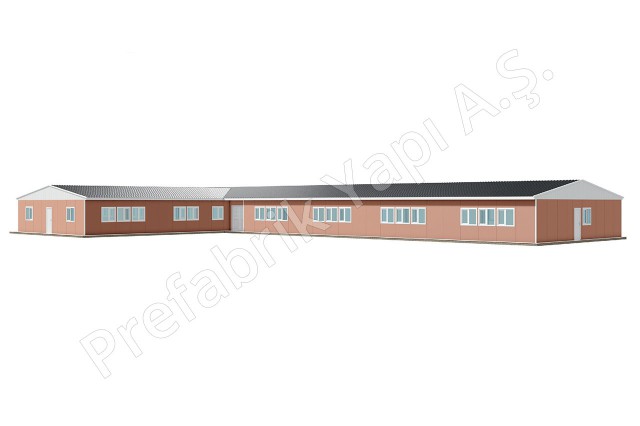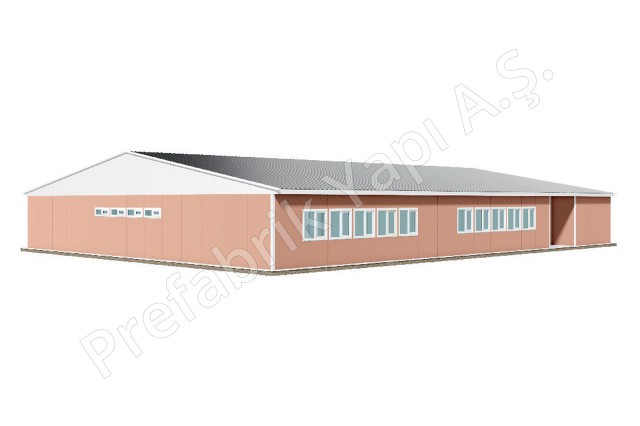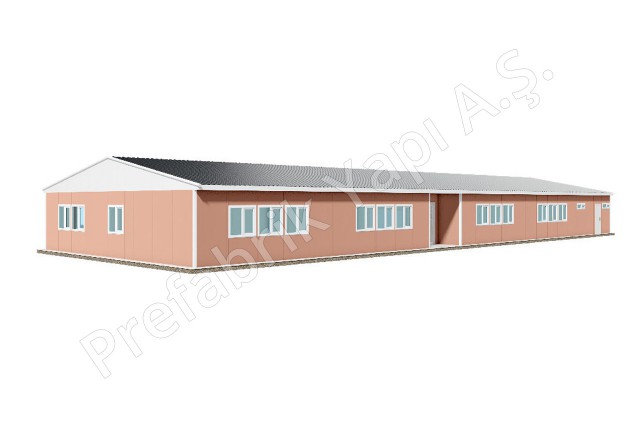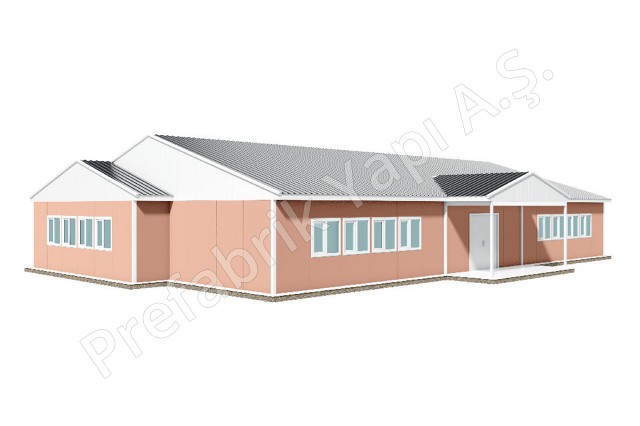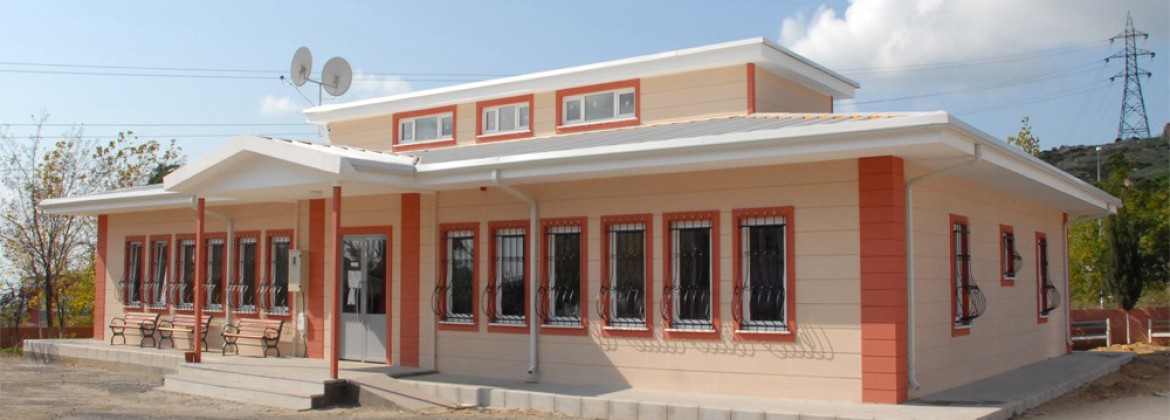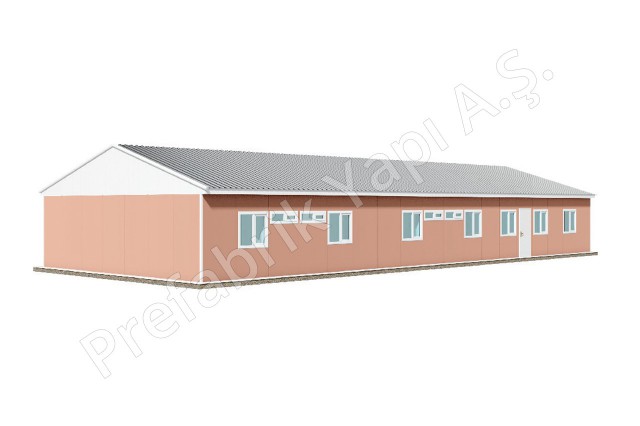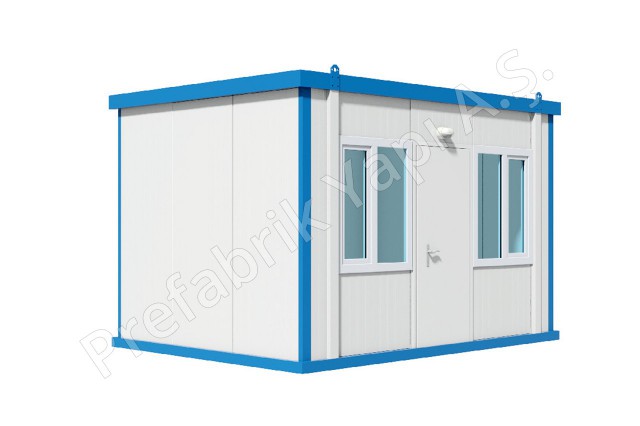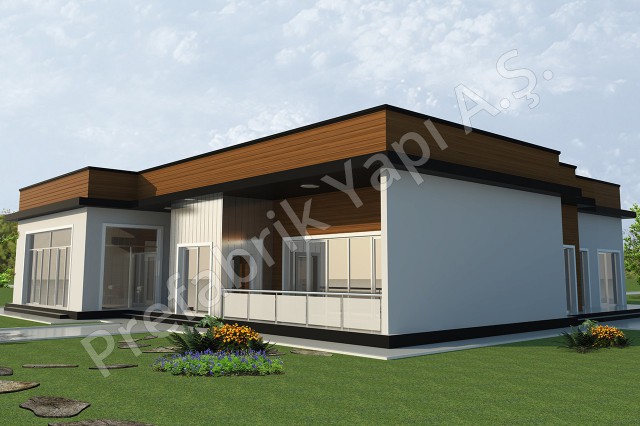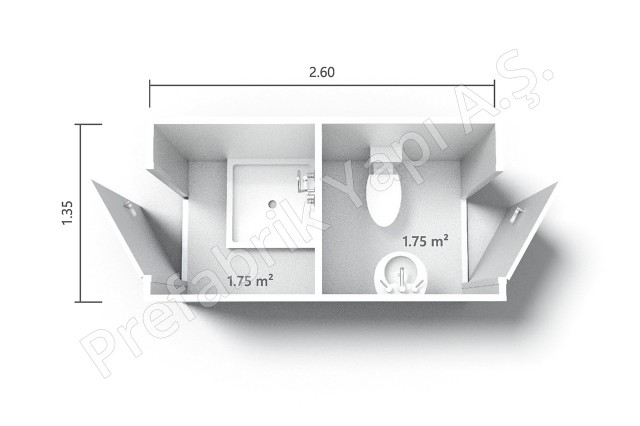Prefabricated Educational Buildings
Product Category: Prefabricated Educational Buildings
Prefabricated Educational Buildings - Standard Plans
Prefabricated educational buildings are becoming the cornerstone of modern school infrastructure, offering durable, fast, and cost-effective solutions for various educational needs.
With the rapid advancement of construction technologies and increasing awareness of sustainability, prefabricated educational buildings have become a highly preferred alternative in the educational sector. These buildings are constructed using modular systems developed in controlled factory environments, ensuring consistent quality, fast production, and minimal error margins. Thanks to their efficient design and quick assembly features, prefabricated structures provide educational institutions with an opportunity to meet urgent space needs without compromising on safety or functionality.
Prefabricated school buildings are not only temporary solutions. On the contrary, they are engineered to be permanent structures, capable of withstanding environmental challenges while offering comfort and durability. Materials such as A-1 class incombustible fiber cement, steel frame systems, and high thermal insulation elements ensure these buildings are both earthquake-resistant and environmentally friendly. As urban populations grow and educational needs diversify, prefabricated solutions offer scalable, smart infrastructure for future-ready campuses.
What Is a Prefabricated Educational Building?
A prefabricated educational building is a school or educational facility constructed using modular units that are manufactured off-site and then assembled at the final location. These buildings are created with precision in factory settings, allowing for high quality control and rapid delivery timelines. Unlike conventional structures, which often face delays due to weather or site conditions, prefabricated buildings eliminate these inefficiencies, providing educational facilities that are both reliable and fast to implement.
At the core, these buildings aim to support learning environments with the same or better functionality and safety as traditional schools. Systems like Hekim Steel Carcassed System and Hekim Panel System, used by firms like Prefabrik Yapı A.Ş., are tailored specifically for educational needs. These systems ensure proper ventilation, thermal performance, and fire resistance while allowing design flexibility to cater to various grade levels from kindergarten to universities.
Why Choose a Modular Educational Building?
The reasons for choosing a modular educational building are both practical and strategic. Firstly, the speed of installation is a major advantage. Schools facing urgent space requirements whether due to increased student intake or emergencies like natural disasters can benefit from modular buildings that are ready for use in just weeks. Additionally, because these buildings are pre-designed and produced under strict quality controls, issues such as construction errors or material inconsistencies are minimized.
Another critical factor is sustainability. Modern prefabricated school buildings utilize eco-friendly materials and generate less construction waste. They also often include energy-efficient systems, reducing long-term operational costs. Moreover, design flexibility allows institutions to expand or reconfigure spaces based on evolving needs. For example, prefabricated booths for school events or temporary modules for training centers can be added seamlessly, adapting to short-term or seasonal demands.
Educational Building Use Cases
Prefabricated school structures have a wide range of use cases across various educational levels and institutions. These modular facilities can be tailored to meet specific architectural, functional, and regulatory requirements, making them ideal for both temporary and permanent deployments. Whether a rural village needs its first primary school, or a city university requires an additional lecture hall, prefabricated solutions offer scalable and quick-to-implement options.
Thanks to flexible planning capabilities and advanced production techniques, prefabricated education complex designs can include classrooms, laboratories, administrative offices, libraries, and restrooms. They can be single-story or multi-story structures, depending on the site and project scope. Additionally, these buildings comply with the technical specifications of national educational authorities, ensuring compatibility with current academic infrastructure standards. For instance, in Turkey, the Ministry of Education requires a 3.00-meter story height, which prefabricated designs can easily accommodate.
Classrooms for Primary and Secondary Schools
One of the most common applications of prefabricated school buildings is for primary and secondary education. These buildings are specifically designed to support the developmental and learning needs of children and adolescents. The structures can include multiple classrooms, common areas, restrooms, and administrative offices — all within a modular framework that allows for future expansion.
The quick installation time of these buildings is a huge benefit for regions facing sudden population growth or requiring immediate educational infrastructure. In addition, the use of A-1 class incombustible fiber cement materials ensures the safety of students in both interior and exterior surfaces. Heating, ventilation, and electrical systems are all embedded during production, ensuring quick operational readiness without additional on-site work.
Modular Buildings for Universities
Universities often need to expand their facilities rapidly due to growing student populations or new academic programs. In such cases, modular educational buildings provide ideal solutions. From additional classrooms and computer labs to dormitories and faculty offices, these structures can be configured to fit the specific demands of a higher education environment.
Prefabricated modules can be equipped with high-tech infrastructure, such as smart boards, advanced ventilation systems, and high-performance insulation, making them suitable for modern pedagogical needs. Additionally, prefabricated school building manufacturers often collaborate with university planners to ensure campus aesthetics and functionality are preserved while adding much-needed space efficiently.
Educational Spaces for Training Centers
Prefabricated education complexes are also widely used by vocational schools and corporate training centers. These centers often require flexible, adaptable spaces that can be tailored for different training modules and hands-on workshops. With prefabricated solutions, training rooms can be quickly adapted for different industries, from healthcare to automotive.
Because these buildings are modular, they can be disassembled and relocated or reconfigured as training programs evolve. This adaptability makes them a cost-effective investment for institutions with dynamic educational needs. Enhanced soundproofing, integrated AV systems, and robust flooring can also be incorporated depending on the nature of the training provided.
Temporary Schools in Disaster Zones
In emergency situations such as earthquakes, floods, or other natural disasters, the need for immediate educational infrastructure becomes critical. Prefabricated school structures serve as vital solutions for displaced communities by providing safe and functional temporary learning environments.
These buildings can be transported to the affected areas rapidly and assembled on-site within days, restoring a sense of normalcy and structure for children and educators. Despite their temporary role, these schools are constructed with durable and fire-resistant materials, ensuring the safety and well-being of users during recovery periods. Modular designs can also accommodate medical stations, rest zones, and sanitation units as part of a larger relief complex.
Advantages of Prefabricated School Buildings
Prefabricated school buildings have become an essential solution for educational infrastructure thanks to their unique technical and functional advantages. These systems not only offer speed and cost efficiency but also meet the highest standards in safety and sustainability.
Fast Production and Installation:
Prefabricated modules are manufactured in a factory environment, which allows for parallel site work and production. This results in significantly shorter construction times compared to traditional methods, making these buildings ideal for urgent educational needs.
High-Quality Standards:
Since production occurs under controlled conditions, quality is kept consistent across all components. Errors common in on-site construction are minimized, and material precision is guaranteed, ensuring a longer building lifespan.
Earthquake and Fire Safety:
These structures are designed to be earthquake-resistant, which is especially crucial in seismic regions. In addition, the use of A-1 class incombustible fiber cement ensures superior fire safety on both exterior and interior surfaces.
Educational Building Design Options
One of the most valuable aspects of prefabricated educational buildings is their design versatility. Unlike the one-size-fits-all image many associate with prefabrication, today’s modular systems are customizable to meet architectural, educational, and regulatory requirements. This flexibility allows institutions to create spaces that align perfectly with their mission and culture.
Architectural planning includes both aesthetic and functional considerations. Exterior facades can be finished with textured panels, natural tones, or customized branding to reflect institutional identity. Internally, rooms can be configured in various sizes and layouts to accommodate different types of learning from standard classrooms to labs, libraries, and multipurpose halls.
What Is a Prefabricated School Building Plan?
A prefabricated school building plan is a comprehensive design and construction roadmap tailored specifically for modular educational facilities. It includes architectural layouts, technical specifications, material details, and engineering calculations that ensure the building meets national educational and safety standards.
These plans are typically developed based on predefined regulations, such as the Ministry of Education’s requirements in Turkey, which mandate a story height of 3.00 meters. Every element from wall thickness and insulation levels to door/window placement and load-bearing capacities is detailed within the plan. This level of precision ensures that there are no surprises during assembly and that the building performs as expected over time.
Prefabrik Yapı Educational Building Cost
The prefabricated school buildings cost varies depending on the building size, layout, materials used, and project requirements. At Prefabrik Yapı A.Ş., each educational project is evaluated individually to provide an accurate and cost-effective solution. Factors such as number of classrooms, number of stories, insulation level, and fire-resistant material usage all influence the final price. However, prefabricated structures generally offer up to 30% savings compared to traditional methods, thanks to faster construction and less labor. Prefabrik Yapı delivers economical, high-quality educational buildings tailored to meet both budget expectations and long-term functional needs.
Contact Us for Your Educational Building Project
To begin your prefabricated educational building project, you can reach out to Prefabrik Yapı A.Ş. for end-to-end professional support. Our experienced team will evaluate your institutional needs and offer a modular solution designed with safety, durability, and efficiency in mind. From initial concept to final delivery, we manage all stages of the process, ensuring compliance with national standards. Whether you need a single classroom or an entire campus, we are ready to provide a custom design that fits your budget and timeline. Contact us today to bring your educational facility to life quickly and reliably.

